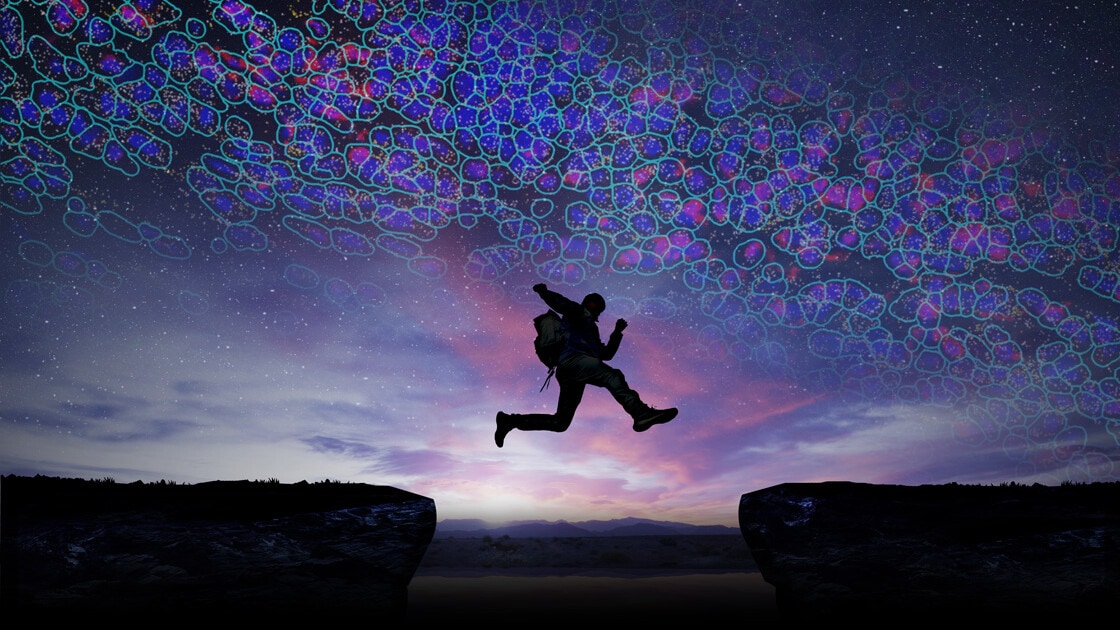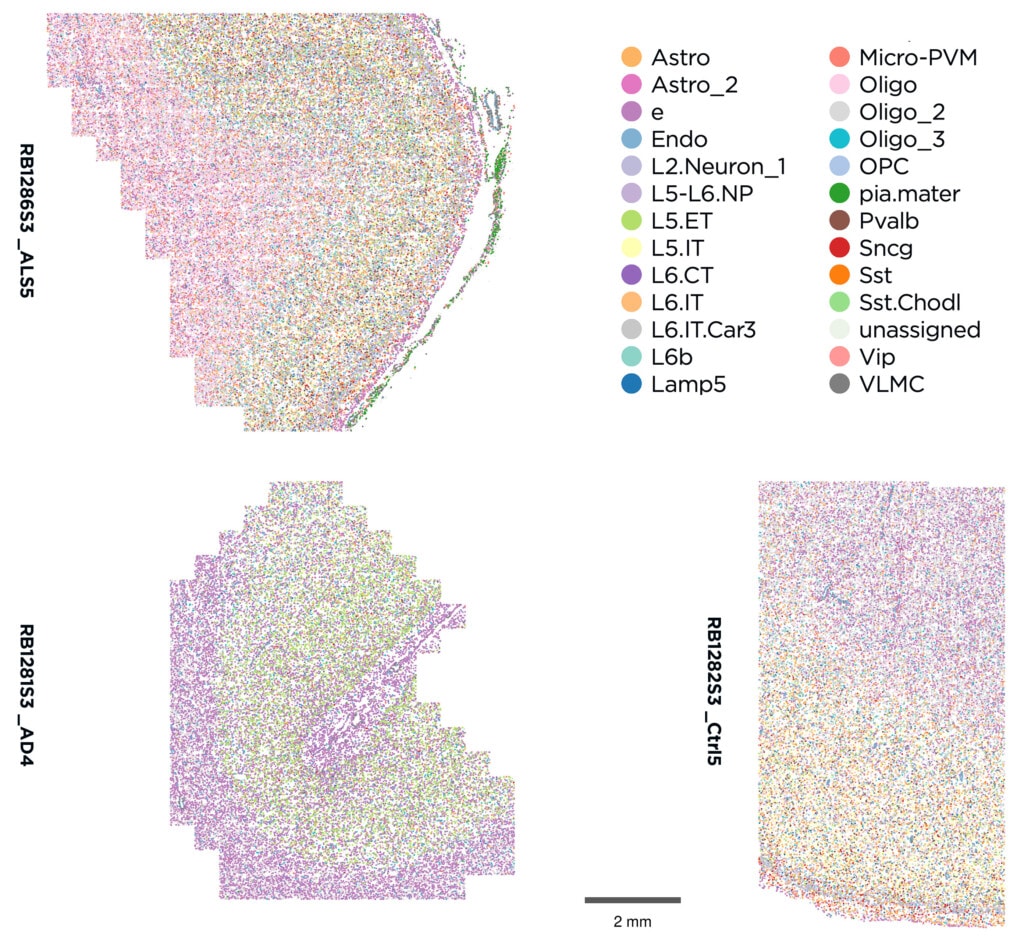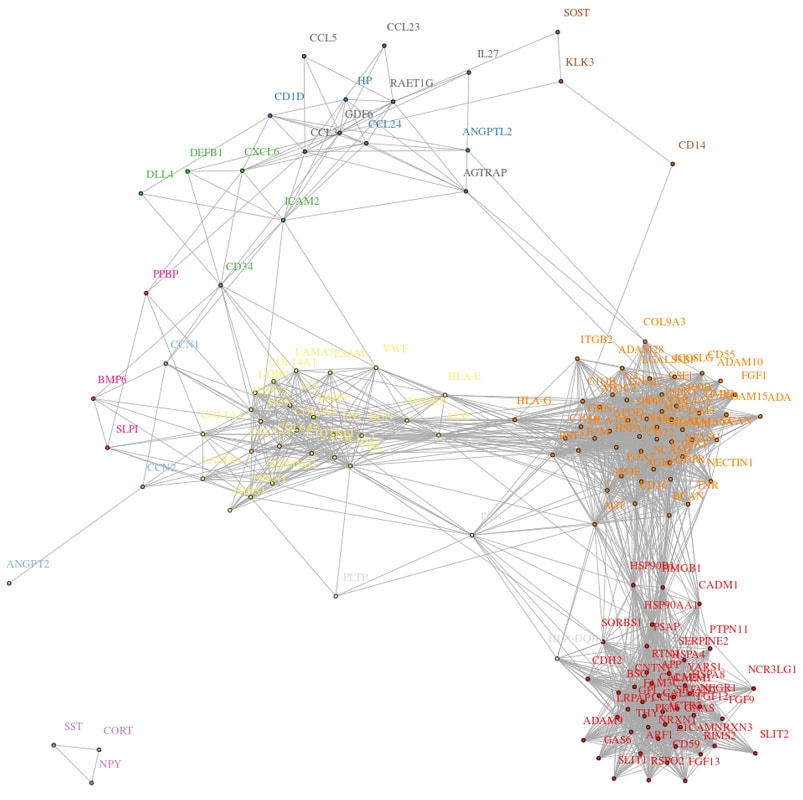
CosMx™ Human 6K Discovery Panel
The CosMx®️ 6K Discovery panel enables the spatial analysis of the entire reactome at a single cell level, providing a comprehensive means to examine and understand the spatial distribution of cellular pathways.
Applications
Semi-supervised cell typing using Allen Human M1 Atlas

nb_clus #1 (motorClus20_custom_qc_2)
Novel clusters: Astro_2, L2.Neuron_1, Oligo_2, Oligo_3, e, pia.mater

Discovery of spatially co-expressed ligands in diverse types of cells in FFPE liver cancer

Ligands Co-localization Identify Rare Cell Type in Human Brain: Sst Chodl neurons
Unsupervised clustering is performed on the correlation matrix of ligands’ neighborhood expression profiles to identify clusters of co-localized ligands. One ligand cluster consists of 3 ligands, SST, NPY, CORT, and shows strong correlation in their neighborhood expression profiles. The co-expression of those 3 ligands identify a rare cell type, Sst Chodl interneurons, in the dataset.


Technologies Comparison
Stay Informed
Get information on product availability and more.

Research
High-plex imaging of RNA and proteins at subcellular resolution in fixed tissue by spatial molecular imaging
Resolving the spatial distribution of RNA and protein in tissues at subcellular resolution is a challenge in the field of spatial biology. We describe spatial molecular imaging, a system that measures RNAs and proteins in intact biological samples at subcellular resolution by performing multiple cycles of nucleic acid hybridization of fluorescent molecular barcodes.




